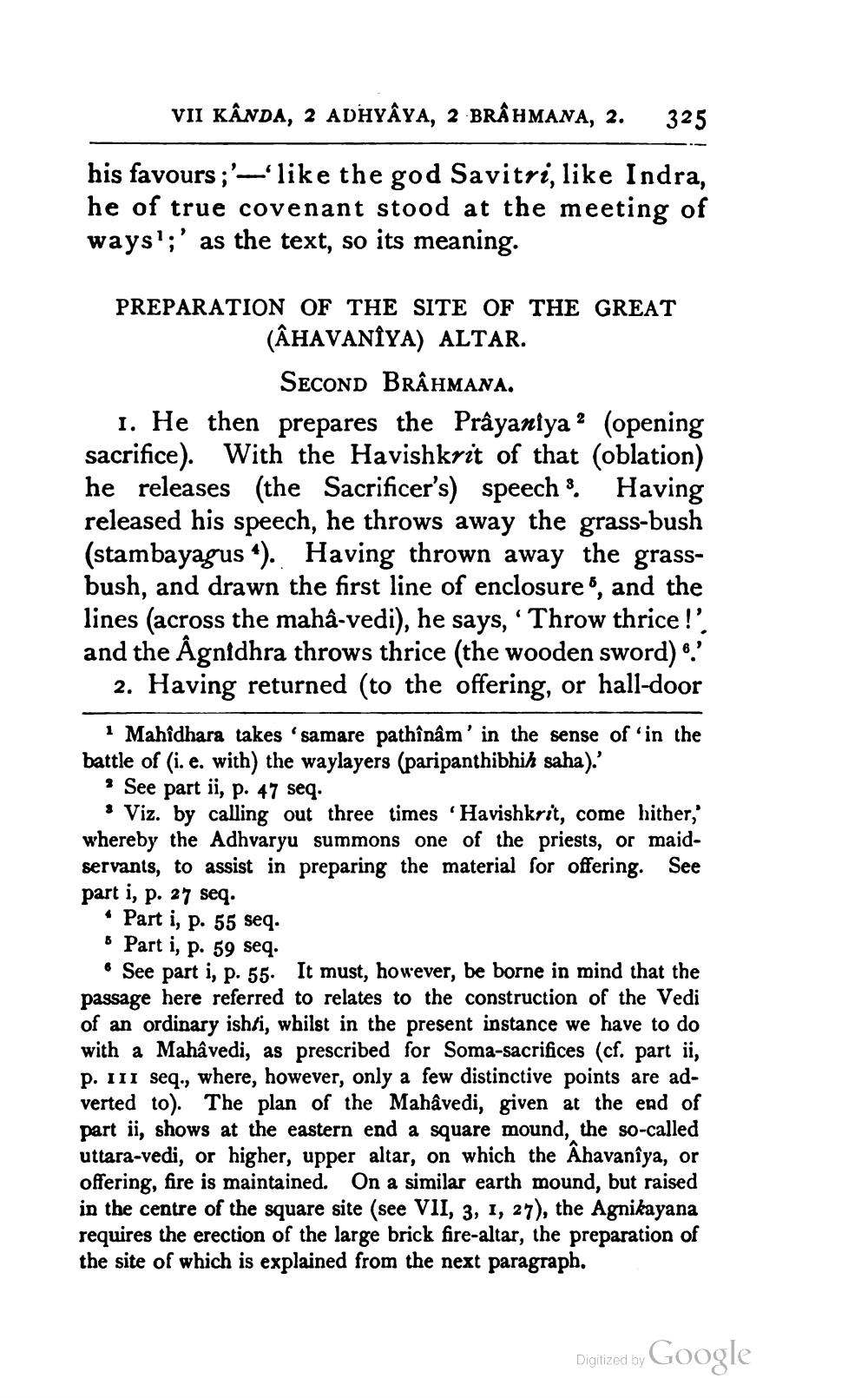________________
VII KÂNDA, 2 ADHYAYA, 2 BRÂHMANA, 2.
325
his favours; '-'like the god Savitri, like Indra, he of true covenant stood at the meeting of ways';' as the text, so its meaning.
PREPARATION OF THE SITE OF THE GREAT
(ÂHAVANIYA) ALTAR.
SECOND BRÂHMANA. 1. He then prepares the Prâyaniya ? (opening sacrifice). With the Havishkrit of that (oblation) he releases (the Sacrificer's) speech . Having released his speech, he throws away the grass-bush (stambayagus *). Having thrown away the grassbush, and drawn the first line of enclosure, and the lines (across the mahâ-vedi), he says, 'Throw thrice!'. and the Agnidhra throws thrice (the wooden sword) 6.'
2. Having returned (to the offering, or hall-door 1 Mahîdhara takes 'samare pathînâm' in the sense of in the battle of (i. e. with) the waylayers (paripanthibhih saha).'
. See part ii, p. 47 seq.
• Viz. by calling out three times “Havishkrit, come hither, whereby the Adhvaryu summons one of the priests, or maidservants, to assist in preparing the material for offering. See part i, p. 27 seq.
• Part i, p. 55 seq. o Part i, p. 59 seq.
• See part i, p. 55. It must, however, be borne in mind that the passage here referred to relates to the construction of the Vedi of an ordinary ishti, whilst in the present instance we have to do with a Mahâvedi, as prescribed for Soma-sacrifices (cf. part ii, p. III seq., where, however, only a few distinctive points are adverted to). The plan of the Mahâvedi, given at the end of part ii, shows at the eastern end a square mound, the so-called uttara-vedi, or higher, upper altar, on which the Ahavanîya, or offering, fire is maintained. On a similar earth mound, but raised in the centre of the square site (see VII, 3, 1, 27), the Agnikayana requires the erection of the large brick fire-altar, the preparation of the site of which is explained from the next paragraph.
Digitized by Google




